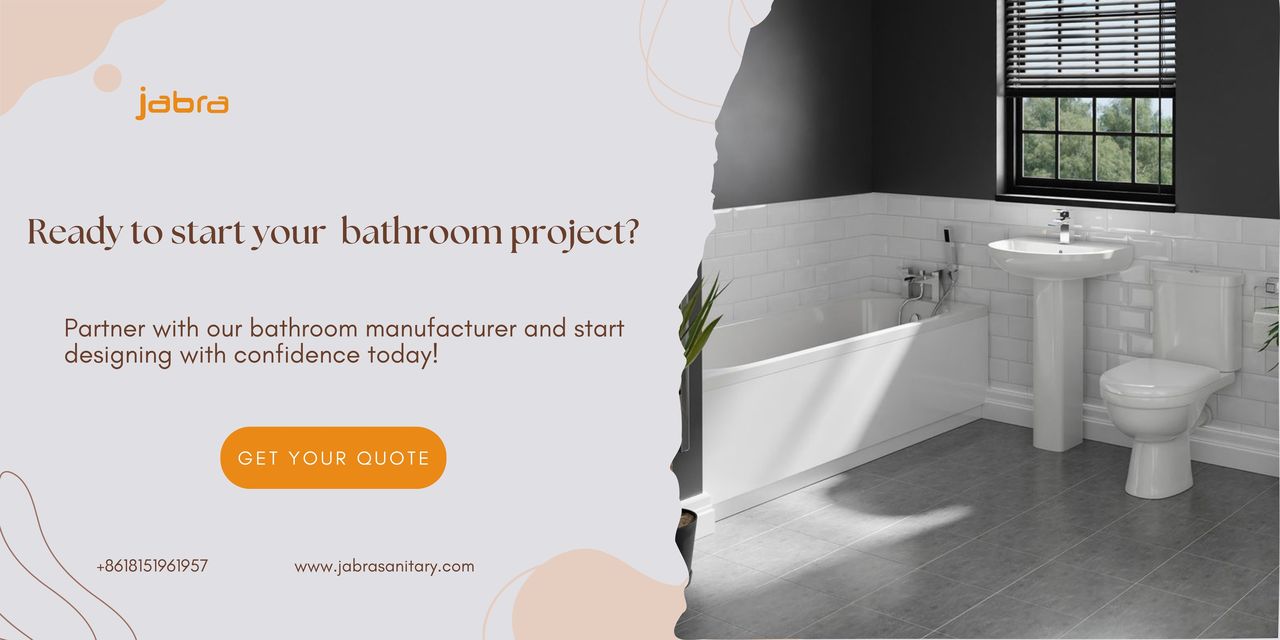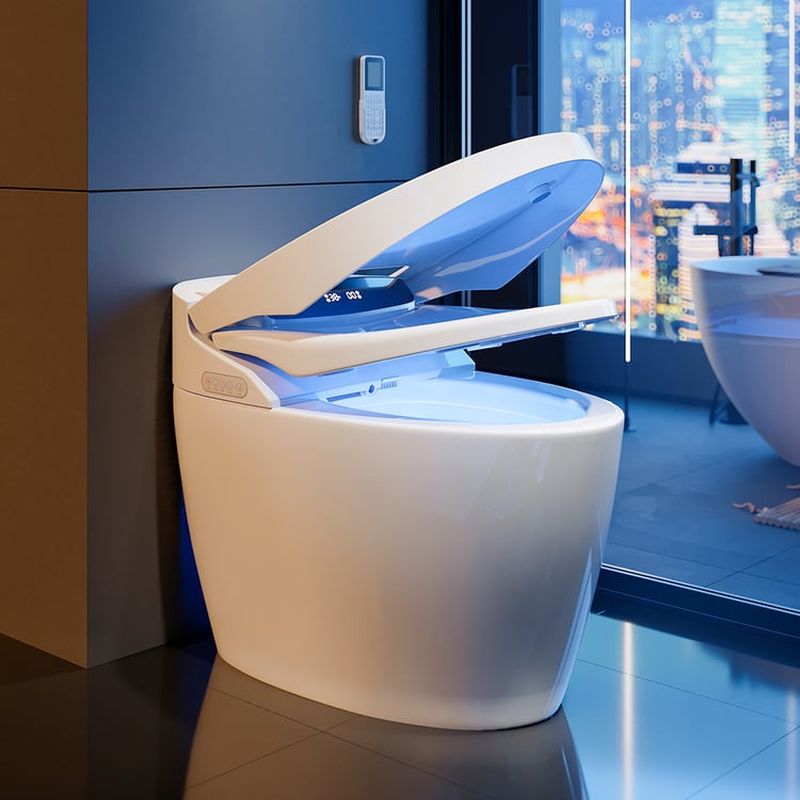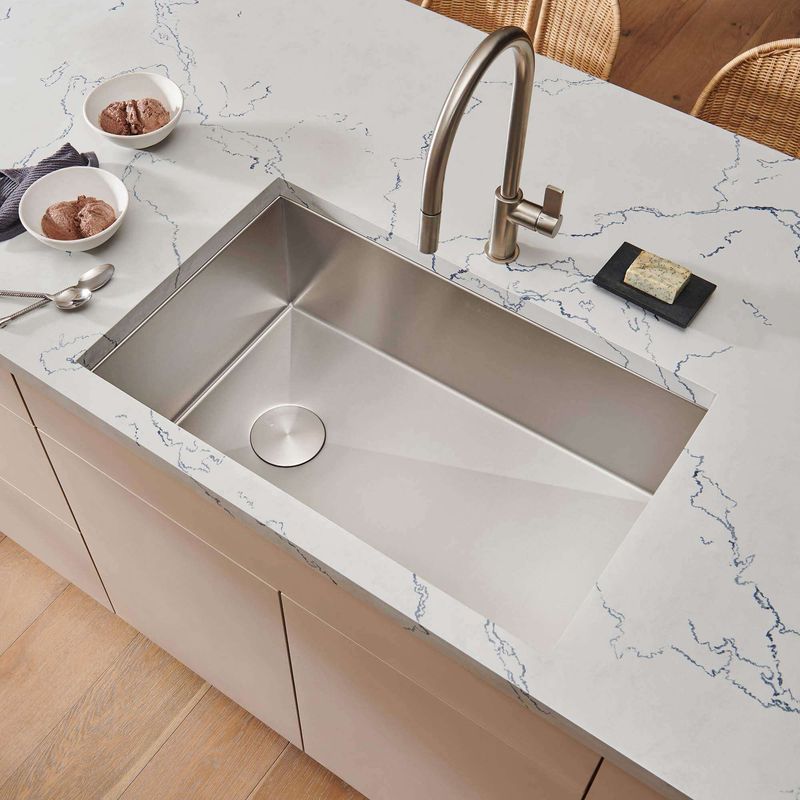 English
English
Jabra Sanitary is a sanitaryware supplier offering toilets, sinks, faucets, bathtubs, etc., at competitive prices. If you're a distributor, wholesaler, or project contractor, get a quote today!
 $23.9 Limited-time Offer
$23.9 Limited-time Offer Consignment Policy
Consignment Policy 20 Years of Experience
20 Years of Experience
When it comes to faucets, single-handle and double-handle faucets are the most popular choices. Each offers its unique set of advantages and potential drawbacks. Choosing the right faucet for your bathroom or kitchen can significantly impact both functionality and aesthetics.
A single-handle faucet vs double-handle? We tell you all the details.
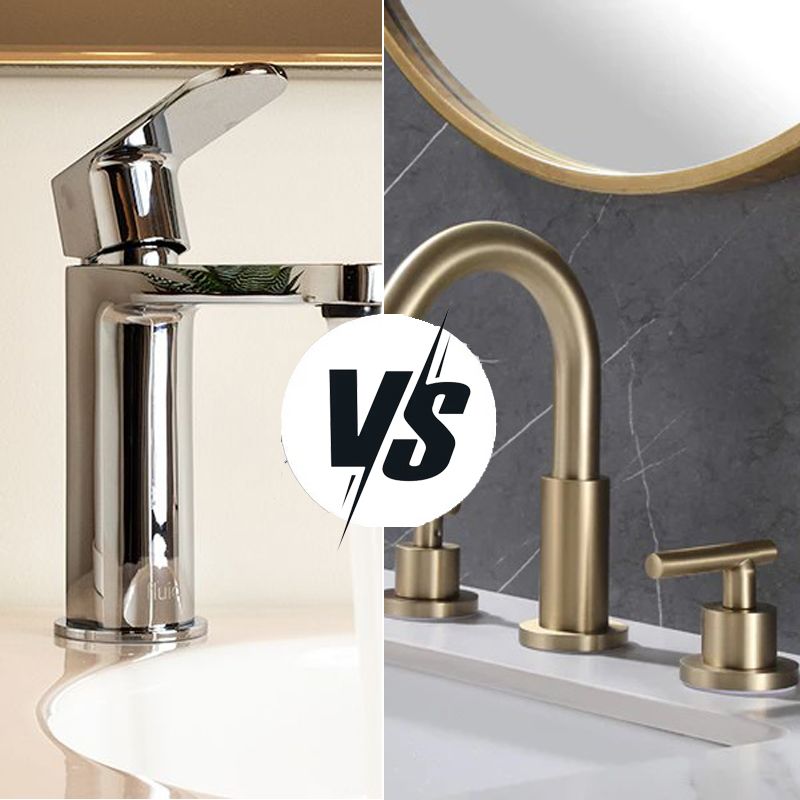
Table of Contents
What Are Single-Handle Faucets?
What Are Double-Handle Faucets?
Single Handle vs Double Handle Faucet: The Major Differences
Size Differences: Single Handle Faucet vs Dual
Design and Aesthetic Appeal: Single Handle Faucet vs Double Handle
Installation: Single Handle vs Double Handle Bathroom Faucet
Function: Single Handle vs Two Handle Bathroom Faucet
Durability: Single Handle Faucet vs Double Handle
Maintenance: Single Handle vs Double Handle Faucet
Cost Analysis: Single Handle vs Two Handle Faucet
How to Choose the Right Faucet for Your Sink?
Expert Tips for Choosing the Right Faucet
FAQs
Conclusion: Transform Your Space with the Right Faucet Type
What Are Single-Handle Faucets?
A single-handle faucet features one lever or knob that controls both the water flow and temperature. This design allows for simple, one-handed operation, making it ideal for multitasking.
There are the pros and cons of single-handle faucets:
Pros
- Ease of Use: The single lever makes it easy to adjust both water flow and temperature with one hand. Perfect for situations where convenience is key.
- Modern Design: Single-handle faucets often have a sleek, contemporary look, fitting well with modern bathroom or kitchen aesthetics.
- Space-Saving: Because they require only one hole in the sink, they are great for smaller spaces.
Cons
- Less Precise Temperature Control: While single-handle faucets are quick and easy to adjust, achieving the perfect temperature may take some time to master.
- Potential Leakage Issues: The simplicity of a single-handle faucet can sometimes be a downside, as internal components can wear out or leak over time.
Single-handle faucets are best for smaller bathrooms or kitchens where space is limited and quick, easy access to water is a priority. Their modern design and user-friendly operation make them a popular choice for people looking for convenience without sacrificing style.
What Are Double-Handle Faucets?
A double-handle faucet features two separate handles—one for hot water and one for cold water. This design gives users greater control over the water temperature. This is because you can adjust each handle independently to find the perfect balance between hot and cold.
There are the pros and cons of double-handle faucets:
Pros
- Precise Temperature Control: With two separate handles, you can fine-tune the temperature to your exact preference.
- Traditional Aesthetic: Double-handle faucets are often favored in classic or vintage-inspired bathroom and kitchen designs. They provide a timeless look that complements traditional decor.
- Durability: The robust design of double-handle faucets generally leads to long-lasting performance.
Cons
- More Space Required: Double-handle faucets typically need more space compared to single-handle faucets, requiring additional room for both handles and the spout.
- More Complex Installation: Installing a double-handle faucet is usually more complicated due to the need for three separate holes—two for the handles and one for the spout.
Double-handle faucets are ideal for larger bathrooms or kitchens where precise temperature control is essential. They are perfect for those who prefer a traditional look and have the space for the larger footprint of this design.
Single Handle vs Double Handle Faucet: The Major Differences
The main differences between a single-handle faucet and a double-handle faucet are design, function, and installation.
Single-handle faucets are modern in design, you can operate them with one hand. They are easier to install because they only require one or two water slot holes to install a spout and handle combination or a separate spout and handle.
Double-handled faucets, on the other hand, have a more traditional look. They require two hands to turn on hot and cold water. So installation and maintenance can be more cumbersome.
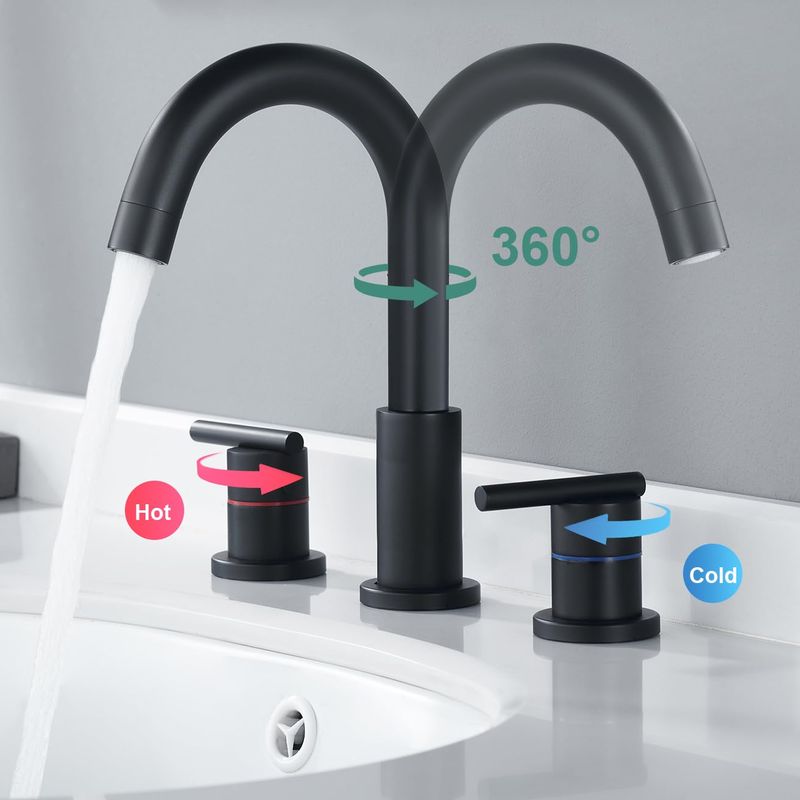
Size Differences: Single Handle Faucet vs Dual
When choosing between a single-handle faucet and a double-handle faucet, size can be an important factor, especially depending on your space. Let's break down the size differences to help you make an informed decision:
Single Handle Faucet
- Compact Design: Single-handle faucets are generally smaller and more compact. They require only one hole for installation, which can be a significant advantage if you're working with limited space.
- Space-Efficient: The single lever takes up less countertop space, leaving more room for other items or functionality. This makes it ideal for smaller sinks or compact bathrooms and kitchens.
Double Handle Faucet
- Larger Footprint: Double-handle faucets typically have a larger presence due to the need for two separate handles and a spout. They require three holes for installation, which means they take up more space on your countertop.
- Best for Larger Sinks: If you have a spacious sink or vanity, a double-handle faucet might be a better fit. It pairs well with larger or more traditional bathroom and kitchen designs.
Design and Aesthetic Appeal: Single Handle Faucet vs Double Handle
When it comes to design, both single-handle faucets and double-handle faucets offer distinct aesthetics. The right faucet can enhance the overall look of your bathroom or kitchen. So it's important to consider the style you're aiming for.
Single Handle Faucet
- Modern and Sleek: Single-handle faucets often have a minimalist design with clean lines and smooth curves, making them a popular choice for modern, contemporary interiors.
- Space-Saving Aesthetics: The simplicity of the single lever offers a less cluttered look. It shows a more streamlined and sophisticated appearance, especially in smaller spaces.
- Variety of Styles: While the design is generally modern, single-handle faucets come in a variety of finishes, such as chrome, brushed nickel, and matte black. It allows you to match them to various decor themes.
Double Handle Faucet
- Timeless and Traditional: Double-handle faucets are often seen as more classic or vintage-inspired. They feature two separate handles, which can give a more intricate and detailed look. They are perfect for those who prefer a traditional or rustic style.
- Elaborate Designs: These faucets often come with decorative elements, such as ornate handles or unique spouts. They are an ideal choice for more opulent spaces or when you want your faucet to be a statement piece.
- Perfect for Larger Spaces: Due to their size and design, double-handle faucets often complement larger, more spacious bathrooms and kitchens where they can stand out and enhance the overall aesthetic.
Installation: Single Handle vs Double Handle Bathroom Faucet
When it comes to installing a faucet, the complexity of the process can vary significantly between single-handle and double-handle faucets. Let's compare the installation requirements for each type to help you decide which one is easier for your setup:
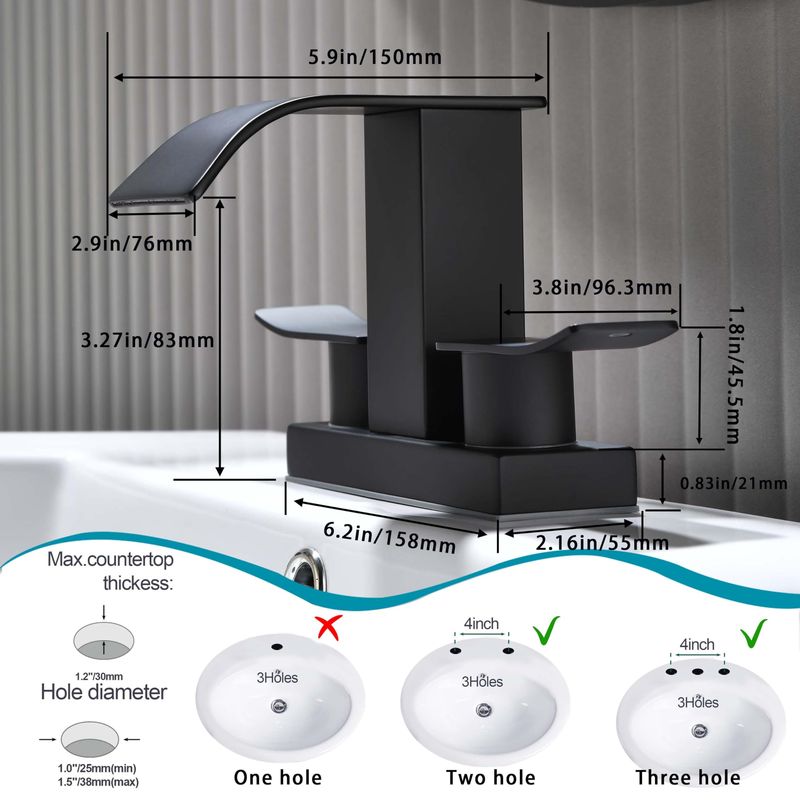
Single Handle Faucet
- Simpler Installation: Single-handle faucets are typically easier to install due to their simpler design. They usually require just one hole in the sink or countertop.
- DIY-Friendly: Because it only needs one hole, the installation process is often less complicated. It can be a great option for DIYers or those looking for a quick and easy installation.
- Fewer Components: With only one handle and one spout, there are fewer parts to deal with during installation, making it a quicker process overall.
Double Handle Faucet
- More Complex Installation: Double-handle faucets require more holes—usually three: one for each handle and one for the spout. This can complicate the installation process, especially if you're replacing an existing faucet with a different setup.
- Professional Help May Be Required: Due to the need for more precise measurements and more parts to install, double-handle faucets may require professional assistance for a smooth and correct installation.
Function: Single Handle vs Two Handle Bathroom Faucet
When considering the functionality of faucets, both single-handle and double-handle faucets provide distinct user experiences and convenience. Understanding how they operate can help you choose the one that best suits your needs.
User Experience
Single Handle Faucet
- Quick Adjustments: With a single lever that controls both the water flow and temperature, a single-handle faucet offers fast, easy adjustments. You can quickly adjust the water to your desired temperature with a simple up, down, or side-to-side motion.
- One-Handed Operation: Perfect for multitasking, especially in kitchens where you might need to adjust the faucet with one hand while holding something in the other.
Double Handle Faucet
- Precision Control: The separate handles for hot and cold water allow for more precise control. While it takes a bit more time to adjust, you can fine-tune the water temperature to your exact preference.
- Two-Handed Operation: It requires two hands to adjust both handles, which could be less convenient if you're in a hurry or have your hands full.
Convenience
Single Handle Faucet
- Easier to Use: The convenience of one handle means you don't have to fiddle with two separate controls. This makes it a favorite for those who prefer a hassle-free, quick experience, especially in busy environments like the kitchen.
- Instant Temperature Control: If you're constantly changing temperatures (e.g., for washing hands or dishes), single-handle faucets allow you to do so with one smooth motion.
Double Handle Faucet
- More Control, But Slower: While adjusting the temperature may take a little longer due to the two handles, it offers a more tailored experience for those who want precise control over the water temperature and flow.
- Steady Temperature: Once set, a double-handle faucet maintains its settings more reliably. It can be beneficial for long tasks or when you don't want to adjust the temperature frequently.
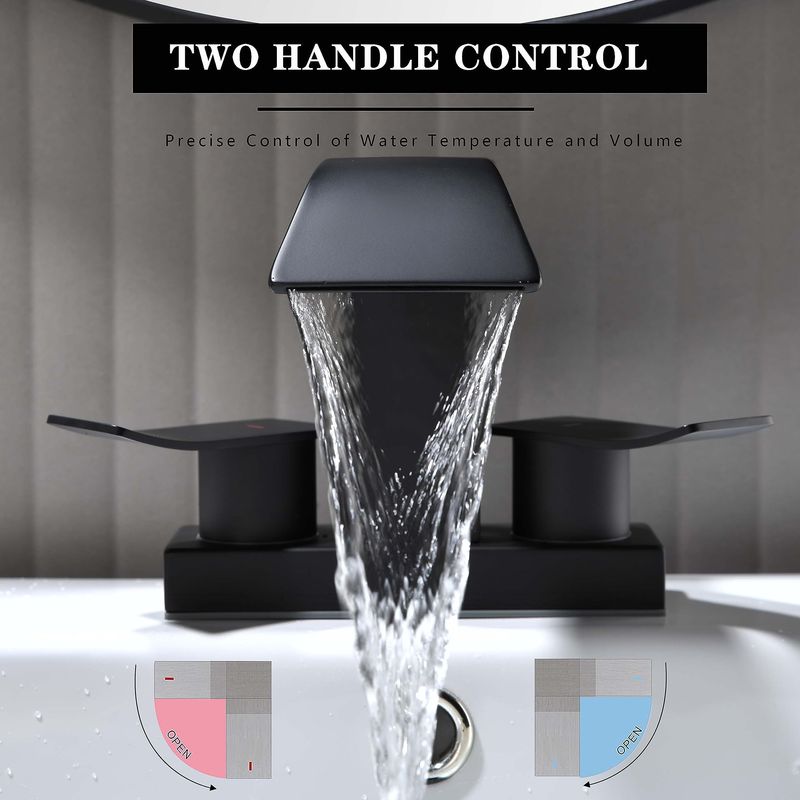
Choosing between the two depends on how you prioritize convenience versus control. If you need quick adjustments and simplicity, a single-handle faucet is ideal. If you value precise control and are willing to spend a bit more time adjusting, a double-handle faucet might be the better fit.
Durability: Single Handle Faucet vs Double Handle
Durability is a key factor when choosing between a single-handle and a double-handle faucet. Since faucets are used frequently, you'll want one that lasts for years without requiring constant repairs or maintenance. Let's compare the durability of each type:
Single Handle Faucet
- Simple Design, More Wear: The single-handle faucet's simpler design can sometimes lead to quicker wear and tear on the internal components, especially with daily use. The internal cartridge that controls both water flow and temperature may wear out over time.
- Prone to Leaks: Single-handle faucets, especially older models, may be more prone to leaking because they rely on a single valve for both hot and cold water. This increases the strain on one component, which can wear out faster.
Double Handle Faucet
- Robust Construction: Double-handle faucets are often built to last longer because of their more complex design. The separate components for hot and cold water tend to distribute wear and tear more evenly across the system.
- Longer Lifespan: Double-handle faucets typically last longer than single-handle faucets due to their durable construction. The more robust valve system can withstand frequent adjustments without wearing down as quickly as a single-handle faucet.
If durability is a major concern for you, a double-handle faucet might be the better choice. However, single-handle faucets can still provide good longevity with proper care.
Maintenance: Single Handle vs Double Handle Faucet
Proper maintenance ensures your faucet continues to function efficiently over time. Both single-handle and double-handle faucets have their maintenance requirements. Understanding these differences can help you decide which option is more manageable for your lifestyle.
Single Handle Faucet
- - Simpler Maintenance: With fewer parts, single-handle faucets are generally easier to maintain. The primary maintenance focus is on the cartridge or valve, which controls the flow and temperature. These may need to be replaced over time if they become worn or damaged.
- - Clogging Issues: Since both hot and cold water flow through the same valve, single-handle faucets can be more prone to clogging or buildup, particularly in areas with hard water.
- - Seals and O-rings: The seals and O-rings in single-handle faucets may wear out and need replacing every few years to prevent leaks.
Double Handle Faucet
- More Complex Maintenance: Double-handle faucets require more attention to each individual handle and valve. Both the hot and cold water controls need to be cleaned, and the valves may need to be replaced over time.
- Longer Lifespan of Parts: While the maintenance is more involved, the separate components often last longer. So you'll likely spend less time replacing parts over the long term compared to a single-handle faucet.
- Handles and Cartridges: Each handle may need maintenance or replacement of its cartridge or valve at different intervals, depending on how often each one is used.
In terms of maintenance, a single-handle faucet might be more convenient. But a double-handle faucet may offer better long-term performance if you're willing to perform more detailed upkeep.
Cost Analysis: Single Handle vs Two Handle Faucet
When it comes to choosing a faucet, cost is always a significant factor to consider. Both single-handle and double-handle faucets come in a range of price points, depending on factors like brand, material, and design. Let's compare the costs of each type.
Single Handle Faucet
- Affordable Options: Single-handle faucets tend to be more budget-friendly, especially when compared to double-handle faucets. Their simpler design and easier installation contribute to lower manufacturing and material costs.
- Range of Prices: The average cost for single-handle faucets typically ranges from $25 to $350, depending on the complexity and features of the faucet.
Double Handle Faucet
- Higher Initial Cost: Double-handle faucets are generally more expensive due to their more complex design and construction. The extra parts and more intricate installation process contribute to a higher price.
- Range of Prices: The average cost for double-handle faucets typically ranges from $50 to $400+, depending on the complexity and features of the faucet.
If you're looking to save money upfront, a single-handle faucet is the better option. However, if you're willing to invest a bit more for long-term value, a double-handle faucet may be the better choice.
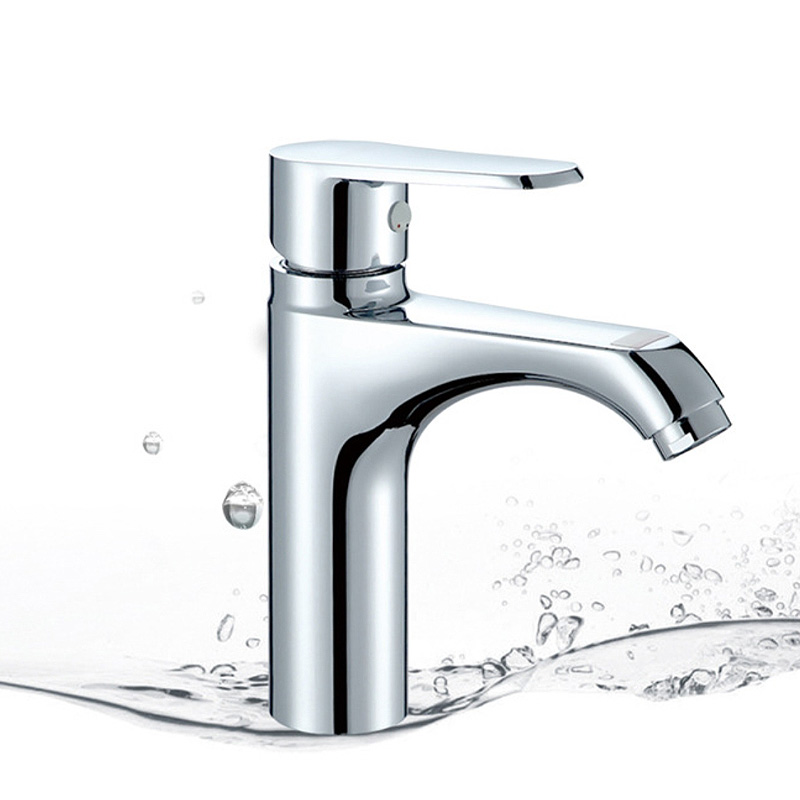 Ads
Ads
Brass Single-Hole Chrome Bathroom Faucet
The Brass Single-Hole Chrome Bathroom Faucet EF8081 offers a sleek and durable design, perfect for any modern bathroom. Crafted from high-quality 59 brass with a weight of 1 kg, this chrome single hole faucet provides exceptional purity and structural integrity.
How to Choose the Right Faucet for Your Sink?
Choosing the right faucet for your sink can feel like a big decision. But by considering a few key factors, you can find the perfect fit for your space and needs. Here's what to keep in mind when deciding between a single-handle and a double-handle faucet.
1. Consider Your Preference and Bathroom Style
Your faucet should reflect your style and complement your bathroom or kitchen design. If you prefer a sleek, modern look, a single-handle faucet might be the right choice.
If you're aiming for a more traditional or vintage aesthetic, a double-handle faucet could be a better fit.
2. Examine Functionality and Convenience (Ease of Use, Temperature Control)
Think about how you'll use the faucet daily.
- For quick adjustments and one-handed operation, a single-handle faucet offers simplicity and speed.
- For more precise temperature control and a stable flow, a double-handle faucet gives you more control over the water.
3. Space and Layout Considerations
If you have a small sink or tight space, the compact design of a single-handle faucet is ideal for making the most of your available space. On the other hand, if you have a larger sink or countertop, a double-handle faucet can provide the extra space needed.
4. Assess Installation and Maintenance
Consider the installation process and ongoing maintenance:
- Single-handle faucets are easier and quicker to install, making them a great DIY option.
- Double-handle faucets require a more complex installation. So they might be better suited for those willing to invest in professional installation.
5. Check Your Budget
Your budget will play a significant role in your decision.
- Single-handle faucets are usually more affordable and ideal for those on a budget.
- Double-handle faucets tend to be pricier initially but may offer better durability and long-term value.
Expert Tips for Choosing the Right Faucet
When it comes to choosing the right faucet, there are a few expert tips that can help guide your decision. These tips focus on maximizing both functionality and style while ensuring long-term satisfaction with your choice.
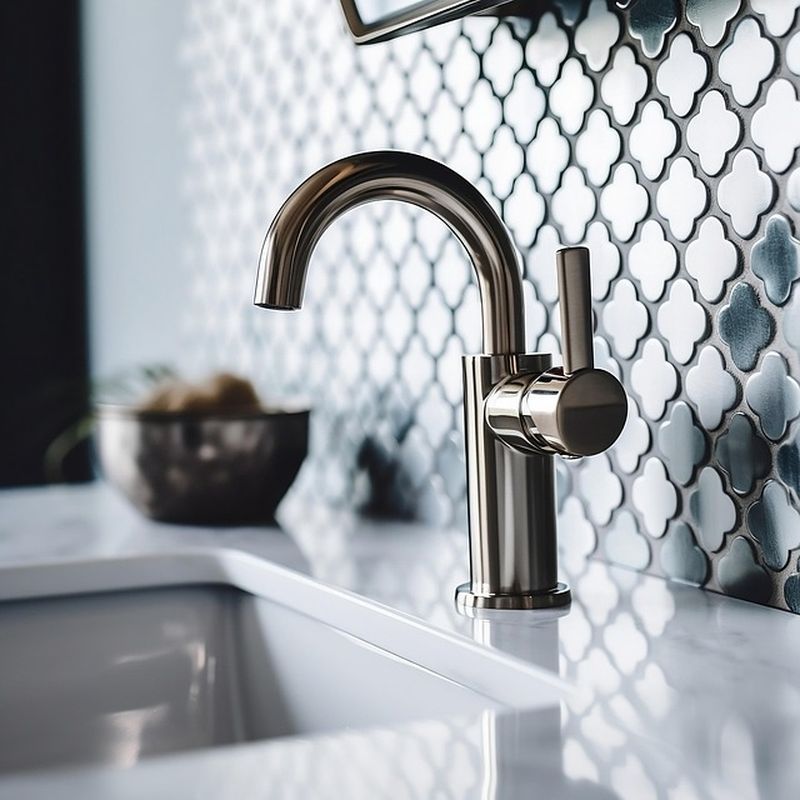
1. Match the Faucet to Your Sink Configuration
Before purchasing a faucet, make sure it's compatible with your sink's configuration.
- Single-handle faucets work well with sinks that have one hole for installation.
- Double-handle faucets require three holes (two for the handles and one for the spout). Ensure your sink has the appropriate number of holes before making a decision.
2. Prioritize Quality Materials
When choosing a faucet, the material it's made from can significantly impact its durability and performance. Look for faucets made from high-quality materials such as:
- Brass or stainless steel for longevity and rust resistance.
- Ceramic cartridges for smooth operation and minimal wear over time.
3. Think About How You Will Use It: Frequently or Occasionally
Consider how often you'll use the faucet. If it's for a space where you'll use it daily (such as a kitchen), opt for a more durable and easy-to-use design, like a single-handle faucet.
For a less frequently used area, like a guest bathroom, you might prefer the classic look of a double-handle faucet.
4. Look for Water Efficiency
Water conservation is an important consideration when selecting a faucet. Choose a model that is WaterSense certified, which ensures the faucet meets the EPA's water efficiency standards.
This can save you money on water bills while reducing your environmental footprint. Many modern single-handle and double-handle faucets offer water-saving features without compromising on performance.
FAQs
Here are some frequently asked questions that can help clarify any uncertainties about single-handle and double-handle faucets:
1) Are kitchen and bathroom faucets different?
Yes, kitchen faucets typically have a higher flow rate to accommodate tasks like washing dishes and filling large pots. Bathroom faucets are designed for lower flow rates and precise control for tasks like washing hands or face.
2) How does a faucet control temperature?
Faucets control the temperature using a valve system. In single-handle faucets, a single lever controls both hot and cold water, adjusting the flow to achieve the desired temperature.
In double-handle faucets, two separate handles control hot and cold water, giving you more precise control over the temperature.
3) How do two-handle faucets work?
Double-handle faucets have two separate controls: one for hot water and one for cold. Turning one handle adjusts the hot water flow, while the other controls the cold water.
By adjusting both handles, you can find the perfect balance of hot and cold for your desired temperature.
4) Can you put a single faucet in a 3-hole sink?
Yes, it's possible to install a single-handle faucet in a 3-hole sink. But you'll need a deck plate to cover the additional holes.
Alternatively, you can use a widespread single-handle faucet that has a single spout but separate hot and cold controls, which fits into the three-hole configuration.
5) Can you replace a single-handle faucet with a double-handle?
Yes, you can replace a single-handle faucet with a double-handle faucet if your sink has three holes. However, this may require some adjustments to the plumbing. You may also need to hire a professional if you're not familiar with plumbing installation.
Conclusion: Transform Your Space with the Right Faucet Type
Choosing the right faucet for your bathroom or kitchen is more than just a practical decision. It's a chance to elevate the overall aesthetic and functionality of your space.
Whether you choose a single-handle faucet for its ease of use and modern design or a double-handle faucet for its precise control and timeless appeal, the right faucet can truly transform your sink area.
Ultimately, take into account factors like style, functionality, budget, and installation ease to make the best decision for your home.
If you still hesitate to make a decision, why not reach out to Jabra Sanitary for help? We are trusted by thousands to choose the faucet best for your needs.







